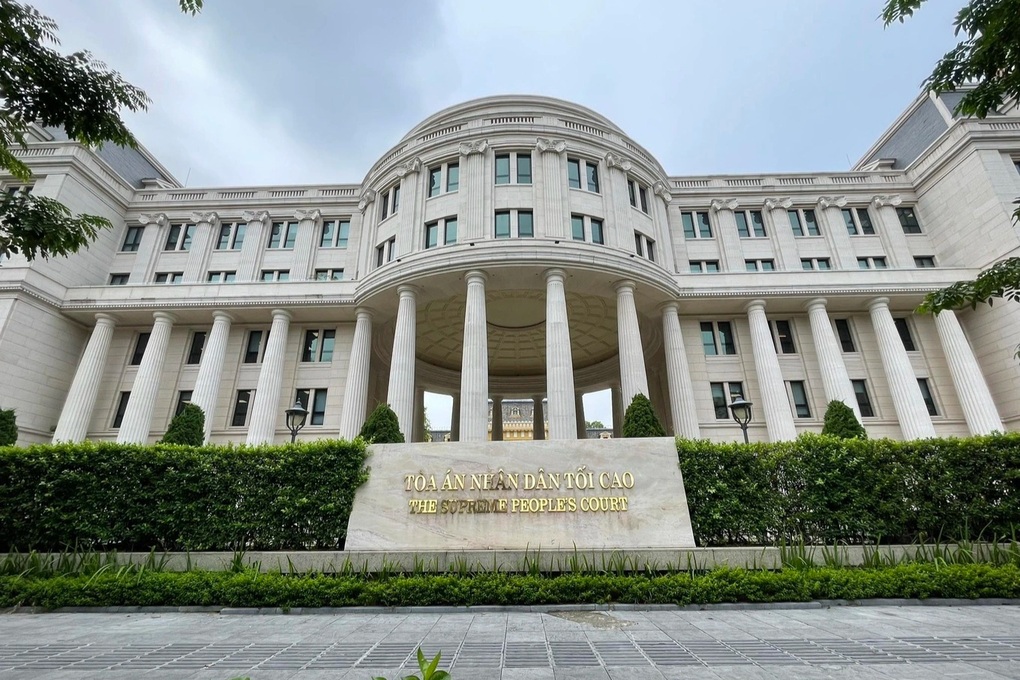Following the conclusions of the Politburo and Secretariat on restructuring and streamlining the People’s Court system to ensure effectiveness and efficiency, and meet the requirements of judicial reform in the new context, the Supreme People’s Court has drafted a revised Law amending some provisions of the Law on the Organization of the People’s Courts (TAND).
According to the Supreme People’s Court, the drafting of the revised law aims to improve the legal framework for the organization, duties, and powers of the People’s Courts, ensuring alignment with the Party’s policy on restructuring and streamlining the system.
The draft law focuses on amending and supplementing provisions related to restructuring and streamlining the organizational structure, duties, and powers of the courts, aligning with the restructuring of administrative units and local governments at the two levels. Key aspects include: introducing a new court structure eliminating higher-level People’s Courts, district-level People’s Courts, and specialized trial courts.
The proposed structure of the court system would comprise: Supreme People’s Court; People’s Courts in provinces and centrally-administered cities; Regional People’s Courts; Central Military Court, Military District Courts and equivalent, and Regional Military Courts.
 Proposal for Appeal Courts in HCMC, Da Nang, and Hanoi – 1The new headquarters of the Supreme People’s Court is located at 43 Hai Ba Trung Street, Hanoi (Photo: Phan Tuyen).
Proposal for Appeal Courts in HCMC, Da Nang, and Hanoi – 1The new headquarters of the Supreme People’s Court is located at 43 Hai Ba Trung Street, Hanoi (Photo: Phan Tuyen).
The draft law details the Supreme People’s Court’s role in overseeing the trial process of all courts, summarizing trial practices to ensure uniform application of laws; developing precedent, and exercising appellate and retrial powers over judgments and decisions that have taken effect.
The Supreme People’s Court comprises a panel of judges, three appellate courts located in Hanoi, Da Nang, and Ho Chi Minh City; four oversight and inspection units, an office, and various departments, academies, and press offices.
To ensure sufficient personnel for the increased workload of appellate and retrial cases inherited from higher-level People’s Courts, the number of Supreme People’s Court judges will be increased from 13 to 17 to 23 to 27, as per the National Assembly’s requirements.
People’s Courts in provinces and centrally-administered cities will be responsible for overseeing and retrial decisions of regional People’s Courts and will have the authority to review and resolve cases where appeal or protest has been filed against the original decisions of the regional People’s Courts.
Regional People’s Courts will be established, reorganizing existing district, city, and municipal People’s Courts under the supervision of provincial and centrally administered city courts.
The draft law specifies that Regional People’s Courts will be named after the administrative region they serve, and numbered sequentially for clarity and ease of identification for the public.
The duties and responsibilities of Regional People’s Courts include: trying criminal cases with sentences up to 20 years; handling all civil and administrative cases that fall within the jurisdiction of the People’s Courts.
Source link: https://dantri.com.vn/xa-hoi/de-xuat-lap-toa-phuc-tham-o-tphcm-da-nang-ha-noi-20250413182707527.htm



